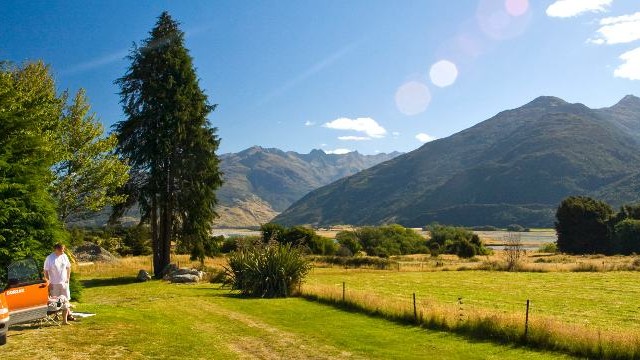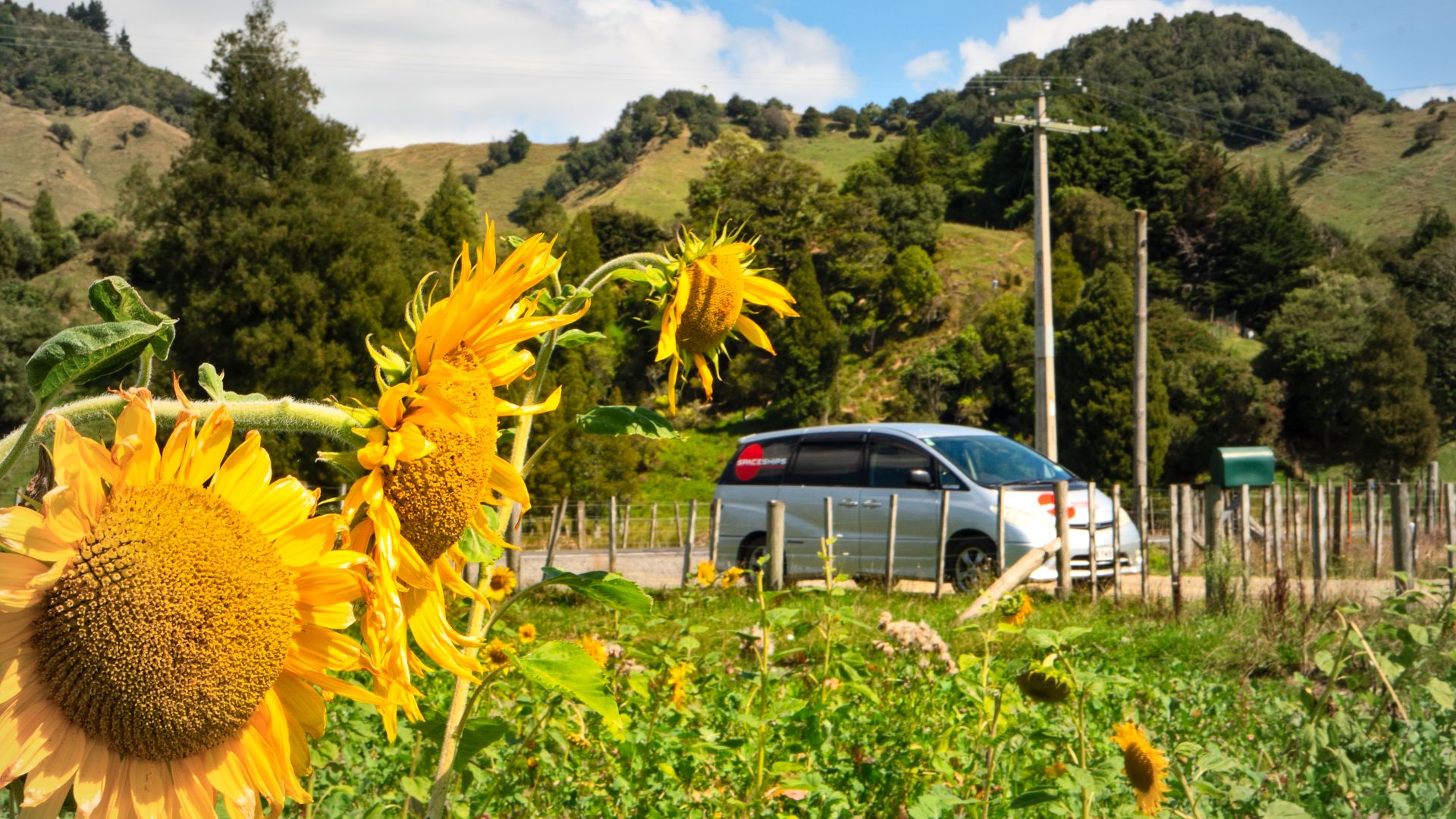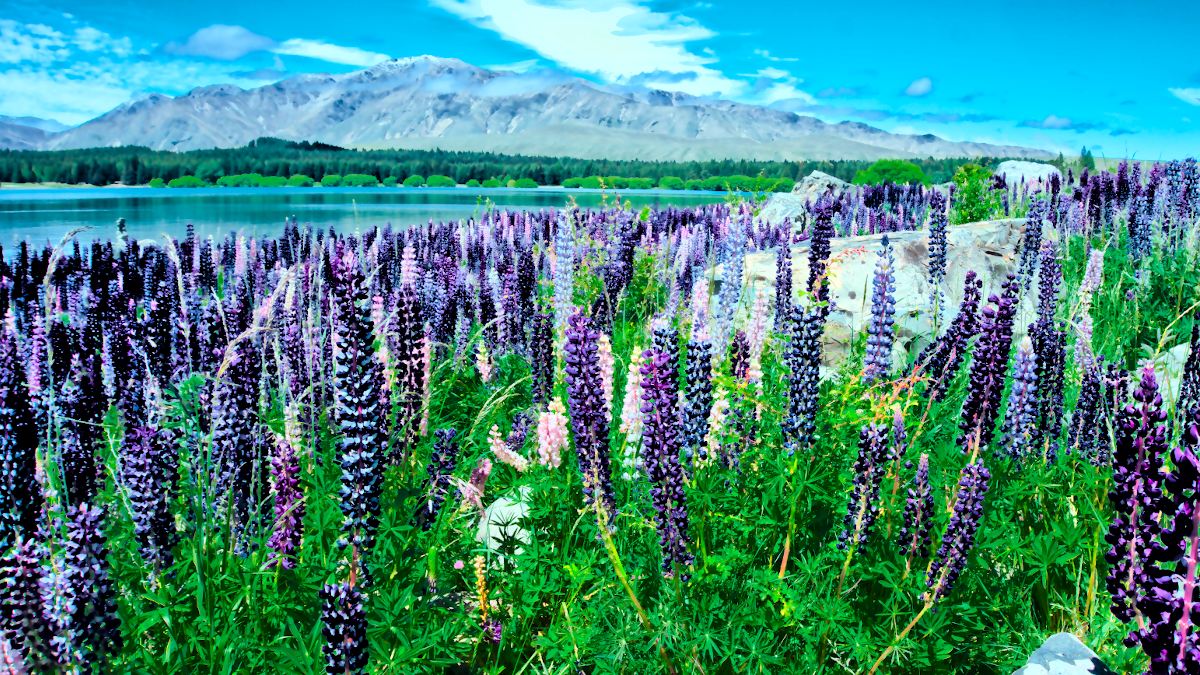New Zealand campervan hire | call 0800 772 237 or +6495262130 | email us | FAQ

Hit enter to search or ESC to close

Is Spring the Best Season for a Road Trip in New Zealand? Yes! We'll Show You Why
30 October, 2023
Posted by Marty | Spaceships Crew
Well, is there a "best season" to be in New Zealand? The country is amazing and you’ll have a great time here, no matter the season you pick for your road trip. It all depends on what’s important to you when planning your big overseas adventure. So let’s have a look at the facts and see why spring in New Zealand is a great season for a road trip.
Spring in New Zealand: facts & figures
Spring in New Zealand typically occurs from September to November. This season is often considered the perfect time to explore the country. Check out these facts about spring in New Zealand and you’ll know why it is such a great season for exploring New Zealand.
Sunshine hours
During spring, New Zealand experiences increasing daylight hours. In September, the average daily sunshine ranges from 4-5 hours, increasing to 6-8 hours by November.
Temperature
In spring, temperatures gradually increase throughout the season. Average daytime temperatures in the North Island range from 14°C (57°F) to 20°C (68°F), while the South Island generally experiences cooler temperatures, ranging from 10°C (50°F) to 18°C (64°F).
Rainfall
Rainfall can be variable during spring, but generally, it's a relatively wet season. The North Island usually receives between 70-130 mm of rainfall per month, while the South Island experiences slightly less, with 50-110 mm per month. However, the west coast of the South Island is much wetter, with some regions receiving up to 300 mm or more of rainfall in a month.
Keep in mind that these are general averages, and weather can vary from year to year. If you are looking for a season with more sunshine and less rain, then consider going for a road trip in New Zealand in autumn. That season is truly an extension of summer - Indian summer - with more consistent sunny days and amazing colours as it'll be leaf-changing season then.
It's still nice & quiet in spring with fewer tourists
As spring arrives in New Zealand, the number of tourists significantly decreases as the majority of tourists won’t arrive in New Zealand until summer (especially mid to late December). This means you’ll more or less have the country to yourself. It won’t be as quiet as it is in winter in New Zealand but it’s definitely not as crowded as it sometimes can get in summer.
This also means that prices for renting a campervan are much lower in spring than they are in summer. Also, during the Spring season, New Zealand's diverse landscape bursts into life with blooming flowers, verdant greenery, and vibrant foliage, creating a breathtaking visual spectacle for nature enthusiasts and photographers alike. The decrease in tourist numbers allows you to take your time, appreciating the pristine landscapes and soaking in the serene tranquillity of the great outdoors.
Spring's pleasant climate and extended daylight hours make it the perfect time to embark on a variety of outdoor adventures. Whether you're hiking in the majestic Southern Alps, cycling through idyllic countryside, or partaking in exhilarating water sports along the stunning coastlines, you'll discover a wealth of activities tailored to your interests and skill levels!

Spring in New Zealand: see why it's a great season for camping
Spring weather in New Zealand
During the spring months - September, October and November - weather might be different from what you’re used to back home. Yes, the average temperature is higher than in winter, but it isn’t summer yet. Expect daytime temperatures of 16 to 19 degrees Celsius. And as always, the further North you go the higher the average temperature will be.
Spring in New Zealand is full of surprises. The weather is a mixture of crisp sunny days and cooler temperatures with occasional spring showers. The average rainfall is around 30mm per month (November) in Alexandra on the South Island and 85mm in Auckland on the North Island in the same month.
Therefore, make sure to go for several thin layers of clothing. Then you’re always prepared no matter what Mother Nature decides to do.
Spring is a great time for hiking
With favourable weather conditions, spring is an ideal time for outdoor activities like hiking, cycling, and water sports. Spring in New Zealand really is the perfect time for hiking as it’s much easier to go for one of the great walks or scenic hikes around the country with the lovely temperatures of spring.
For instance, it’s the perfect time to go for a walk in the Tongariro National Park on the central plateau, as it won’t be too hot to walk among the volcanoes in exposed and open terrain.
Just keep in mind that some trails that go through farmland may be closed for lambing or other reasons. Spring is the season of cute little lambs being born, also in New Zealand.
See the amazing colours in spring: Lupin blooming season
In spring, New Zealand's native plants, trees, and flowers come to life, showcasing a diverse range of colours and forms. Some of the most iconic and beautiful species that bloom during spring include:
- Kōwhai: The kōwhai tree is a New Zealand native, known for its striking yellow flowers that bloom in spring. It is a favourite among local birds, especially the tūī and bellbird, which feed on its nectar.
- Pōhutukawa: Known as the New Zealand Christmas tree, the pōhutukawa typically begins to bloom in late spring and continues into early summer. The tree produces vibrant red flowers that are an iconic sight along the country's coastlines.
- Rātā: Closely related to the pōhutukawa, the rātā tree produces bright red flowers in spring and early summer. The southern rātā is especially prominent on the South Island, while the northern rātā is more common on the North Island.
- Cabbage tree (tī kōuka): The cabbage tree is an unmistakable New Zealand native, with its tall, slender trunk and tufted crown of long, sword-like leaves. In spring, the tree produces clusters of fragrant, creamy-white flowers that attract insects and birds.
- Lupins: While not native to New Zealand, lupins have become a well-known feature of the South Island's landscapes, particularly around Lake Tekapo and the Mackenzie Basin. These tall, colourful flowers bloom in various shades of pink, purple, blue, and white during spring and early summer.
- Cherry blossoms: In certain parts of New Zealand, particularly around Christchurch and Alexandra, you can find cherry blossoms blooming during spring. These delicate pink and white flowers create a beautiful display and are a favourite among photographers.
- Rhododendrons and azaleas: Rhododendrons and azaleas are popular ornamental plants in New Zealand, with many parks and gardens showcasing these vibrant flowers during spring. Their blooms come in a range of colours, including pink, purple, red, and white.
Spring is when New Zealand's natural beauty comes to life, with blossoming flowers, lush greenery, and vibrant foliage. This makes for stunning landscapes, perfect for photography or simply enjoying the view. There are so many awesome colours to see during spring in New Zealand. At the beginning of spring (in September) you can still experience snow. Ski season usually ends early to mid-October in New Zealand.

Experience the colours of spring in New Zealand aka Lupin blooming season
Differences between the North Island and South Island during spring in New Zealand
The North Island typically has a milder climate with higher average temperatures, while the South Island is cooler and can still experience snowfall in the mountains. The west coast of the South Island is particularly wet due to its exposure to prevailing westerly winds.
When it comes to flora, the North Island tends to have more subtropical vegetation, while the South Island features more temperate rainforests, alpine plants, and tussock grasslands. Spring blooms may appear earlier in the warmer North Island.
Some bird and marine species have distinct distributions between the two islands, so the wildlife you'll encounter may differ depending on which island you're on.
The South Island is more mountainous, with the Southern Alps running along its length, whereas the North Island has a more volcanic landscape, featuring geothermal areas and active volcanoes.